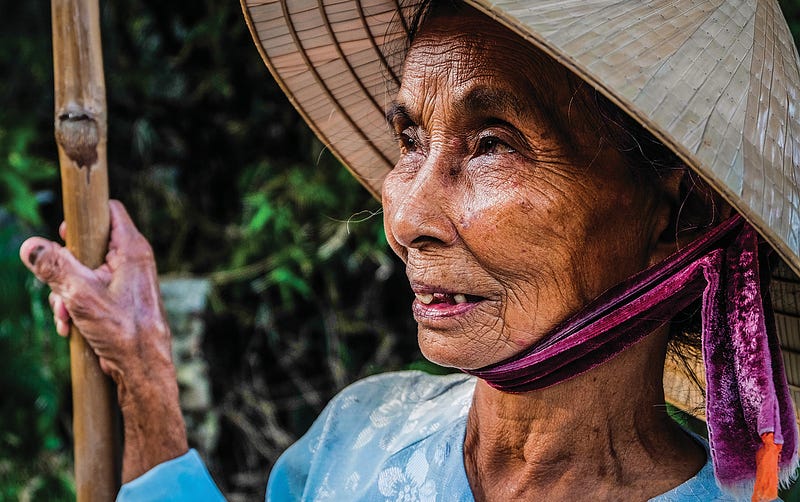Discovering Ikigai: The Japanese Path to a Joyful Life
Written on
Chapter 1: Understanding Ikigai
Until recently, I was unaware of the concept of Ikigai until I stumbled upon an engaging documentary series on Netflix titled "Live to 100: Secrets of the Blue Zones." In this series, Dan Buettner visits Okinawa, Japan, where many of the island's oldest inhabitants embody a tranquil lifestyle driven by a profound sense of purpose known as "ikigai." This Japanese principle has intrigued many seeking a meaningful, fulfilling existence. In this article, we will delve into the origins, essential components, and practical uses of ikigai, revealing the secrets to a long and purposeful life.
Origins of Ikigai
The term "ikigai" originates from Okinawa, Japan—a region renowned for its high population of centenarians and exceptional longevity. Loosely translated, "iki" signifies life, while "gai" denotes worth or value. Together, these elements encapsulate the essence of life and a reason for being. The concept gained prominence in the 1960s when researchers began studying the remarkable longevity of Okinawan residents and identified their robust sense of purpose as a key factor.
Research Findings
A study conducted by PubMed Central (PMC) analyzed data from Japanese citizens aged 65 and older, exploring the connections between having Ikigai in 2013 and various outcomes assessed in 2016. The research examined aspects such as physical health, health behaviors, psychological distress, social well-being, and subjective happiness.
The findings indicated that individuals with Ikigai had a 31% lower risk of developing functional disabilities and a 36% lower risk of dementia over a three-year period. Those with Ikigai also reported lower levels of depressive symptoms and hopelessness, alongside heightened happiness and life satisfaction. Moreover, certain social outcomes, including participation in hobby clubs and associations, were notably stronger among men. The study concluded that Ikigai fosters health and well-being, especially among older Japanese adults, highlighting the importance of community and social engagement for long-term longevity.
Key Components of Ikigai
Ikigai comprises four essential elements, each representing a different facet of life:
Your Passion (What You Love):
This aspect involves identifying pursuits that bring joy and fulfillment. It's about discovering true passions that make you lose track of time.
Your Vocation (What You Are Good At):
Understanding your strengths and skills is vital for achieving ikigai. This element encourages self-awareness regarding your talents and how they can be utilized to contribute positively to the world.
Your Mission (What the World Needs):
Ikigai goes beyond personal satisfaction, urging individuals to consider the broader impact of their actions. This involves recognizing societal needs and understanding how one's unique skills can address those needs. Starting with small steps, such as volunteering monthly, can help ease into this concept.
Your Profession (What You Can Be Paid For):
This practical aspect focuses on finding a way to achieve financial sustainability while pursuing passions and skills, allowing for both personal fulfillment and economic stability.
The Intersection of Elements
The true essence of ikigai lies at the convergence of these four elements. This intersection is where passion, vocation, mission, and profession meet, offering individuals a profound sense of purpose and fulfillment that transcends traditional success.
Practical Applications of Ikigai
Self-Reflection: Begin your ikigai journey with self-reflection. Take time to explore your passions, skills, values, and the impact you aspire to make in the world.
Identifying Strengths: Acknowledge your strengths and celebrate them. Knowing what you excel at is essential for aligning your abilities with your passions.
Aligning with Values: Ikigai encourages alignment between actions and values. Consider the impact of your pursuits on both personal and societal levels, enhancing the meaningfulness of your journey.
Continuous Learning: Adopt a growth mindset by committing to lifelong learning. This includes honing your skills, exploring new interests, and remaining open to personal and professional development.
Balancing Priorities: Achieving ikigai often necessitates balancing personal fulfillment with practical considerations. Pursuing passions is essential, but finding financial sustainability is equally important.
Cultivating Relationships: Build meaningful connections that enhance your sense of purpose. Surround yourself with supportive individuals who align with your values.
Embracing Ikigai is a guiding principle for anyone seeking a life filled with joy and purpose. By exploring the intersection of passion, vocation, mission, and profession, individuals can uncover their unique ikigai and move toward a more meaningful existence. In the midst of modern life's chaos, embracing the essence of ikigai may unlock a path to a peaceful and purposeful life.

Chapter 2: The Influence of Ikigai
The first video titled Ikigai: The Japanese Secret to a Long and Happy Life by Hector Garcia explores the essence of Ikigai and its impact on longevity and happiness.
The second video, Ikigai // The Japanese Secret To A Long & Happy Life, delves deeper into the principles of Ikigai and how to implement them in daily life.
Don't forget to share your thoughts by liking, following, or commenting!